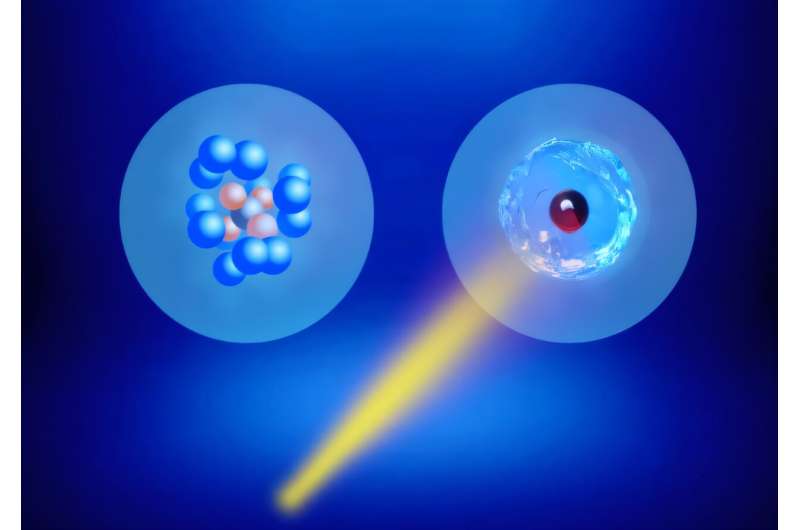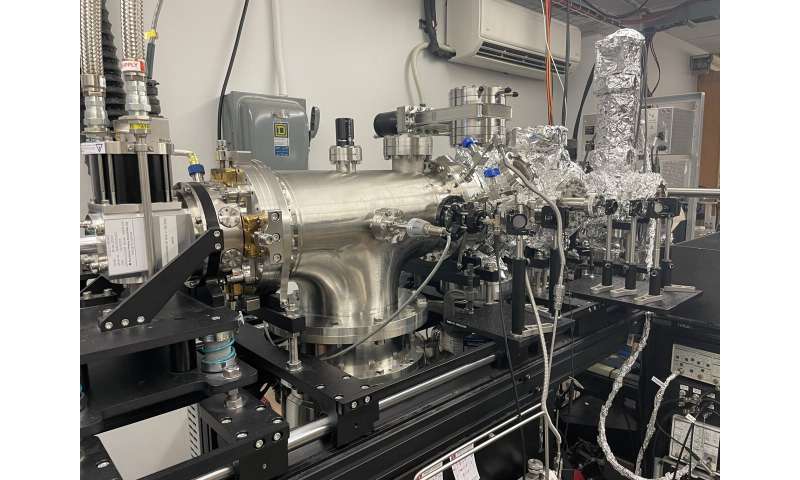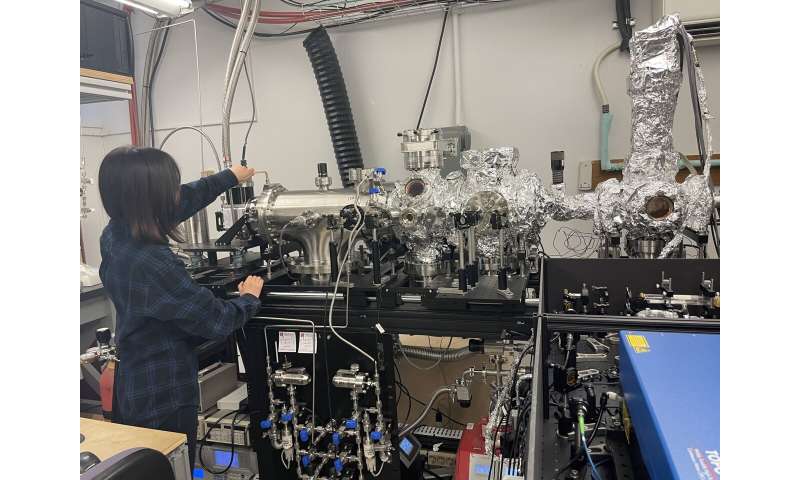This article has been reviewed according to Science X's editorial process and policies. Editors have highlighted the following attributes while ensuring the content's credibility:
fact-checked
peer-reviewed publication
trusted source
proofread
Hydrogen becomes a superfluid at nanoscale, confirming 50-year-old prediction

Hydrogen nano-clusters at low temperatures display 'superfluidity'—a quantum state of frictionless flow only previously observed in helium.
The new research is published in Science Advances by an international team led by chemists at the University of British Columbia (UBC).
"This discovery deepens our understanding of quantum fluids and could inspire more efficient hydrogen storage and transport for clean energy," says Professor Takamasa Momose, an expert on cold molecules at UBC and senior author of the paper.
Helium was discovered to possess superfluid characteristics at low temperatures in 1936—helium atoms flowed through extremely narrow channels without friction or viscosity. Some atomic gases can also behave like superfluids.
Physicist and Nobel laureate Dr. Vitaly Ginzburg did predict liquid hydrogen might also be a superfluid in 1972—but until now, direct observations of hydrogen molecules that can become a superfluid have eluded scientists.
Creating nano-size ultra-cold labs
Hydrogen is typically impossible to study in liquid form—it becomes a solid at -259°C (-434°F). But by confining small clusters of hydrogen molecules inside helium nanodroplets at -272.25°C (0.4 K), Dr. Momose and colleagues at RIKEN and Kanazawa University in Japan were able to keep the hydrogen in liquid form even at low temperatures.
-

Experimental apparatus and laser used by researchers at the University of British Columbia, RIKEN and Kanazawa University to demonstrate superfluidity in hydrogen. Credit: Chie Nakayama, University of British Columbia -

A student working with an experimental apparatus and laser used by researchers at the University of British Columbia, RIKEN and Kanazawa University to demonstrate superfluidity in hydrogen. Credit: Chie Nakayama, University of British Columbia
Then the team embedded a methane molecule in the hydrogen cluster and set it spinning with laser pulses. The spinning methane molecule acts like a canary in a coal mine for superfluidity—if it rotates faster without resistance, the surrounding hydrogen was superfluid. When enough hydrogen molecules (15 to 20 molecules) were placed in a cluster, the methane rotated without resistance, indicating the hydrogen was acting as a superfluid.
"We were thrilled when we first observed the strikingly clear methane spectrum in a tiny droplet of liquid hydrogen," said Dr. Hatsuki Otani, who conducted the work while a Ph.D. student in chemistry at UBC. "It was a strong sign of hydrogen's superfluidity. Then theoretical results from colleagues at Kanazawa University matched our experimental data perfectly."
Hydrogen is used in fuel cells, which only release water as a byproduct—but production, storage and transportation challenges has limited infrastructure advances for the clean fuel. The frictionless flow of superfluid hydrogen could inspire new technologies for more efficient hydrogen transportation and storage in the future.
More information: Hatsuki Otani et al, Exploring molecular superfluidity in hydrogen clusters, Science Advances (2025). DOI: 10.1126/sciadv.adu1093
Journal information: Science Advances
Provided by University of British Columbia





















